Media | Articles
1964 Studebaker Cruiser and Daytona: Brooks Stevens’s Last Pass For South Bend
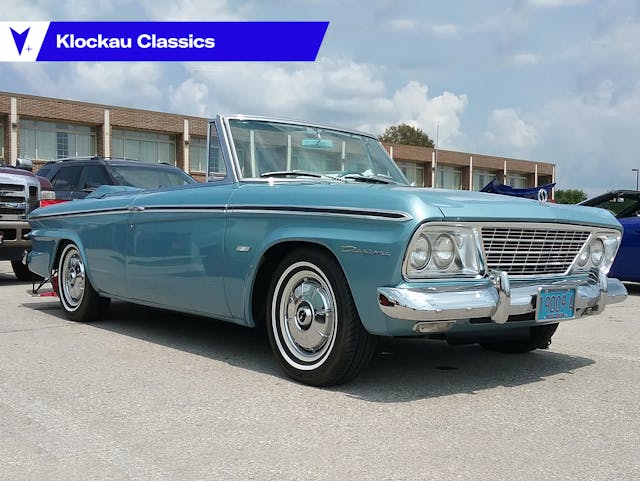
Ever since I first attended an SDC meet in 1996 (thanks to great parents who indulged my love of cars), I have loved Studebaker. But even I have to admit that, in the end, Studebaker execs did themselves in. The company very nearly went under in the 1930s, but thanks to the new management team of Harold Vance and Paul Hoffman—and in no small part, healthy refinancing and restructuring—Studebaker survived the Depression. By late 1933, against all odds, the corporation was back in the black. Unfortunately, those same guys started making the decisions that led to the last South Bend Studebaker cars leaving the soon-to-be-shuttered factory in December 1963, only a few short months into the 1964 model year.

But first, a little history, if you’ll indulge me. Studebaker got off to a great start in the postwar era with its startlingly modern, all-new 1947 line.
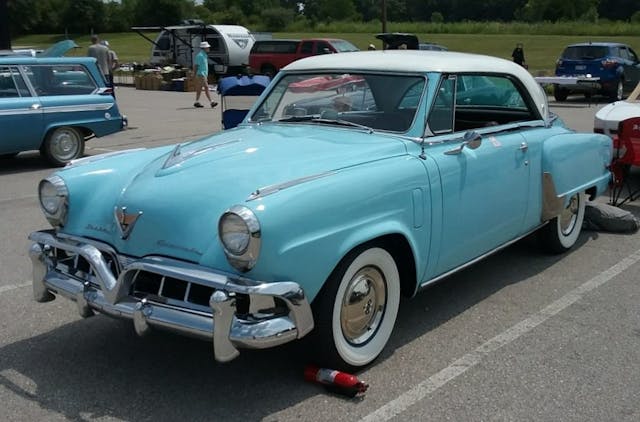
With further advances, such as a V-8 engine and automatic transmission—both designed in-house, a major achievement for an independent—Studebaker had healthy sales through 1952, when it celebrated its centennial.
Unfortunately, trouble was right around the corner. Record sales in 1947–52 helped the automaker tool up for a major redesign and fresh lineup, but it had to be a hit.
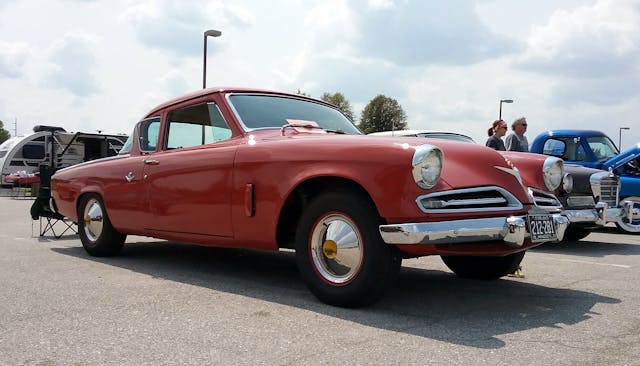
The all-new 1953 models—both the beautiful coupes …
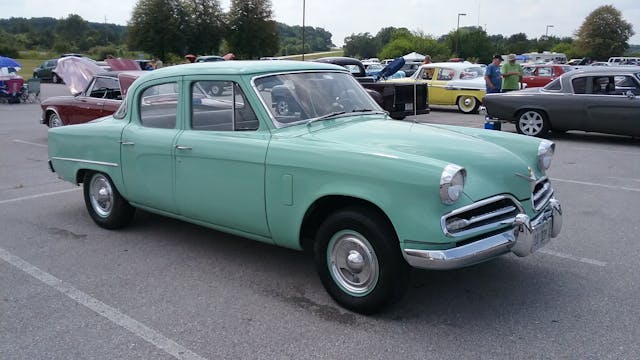
… and the comparably stubby sedans—sold less well than hoped. Studebaker needed a lot more sales than it got to stay in the black.
Marketplace
Buy and sell classics with confidence
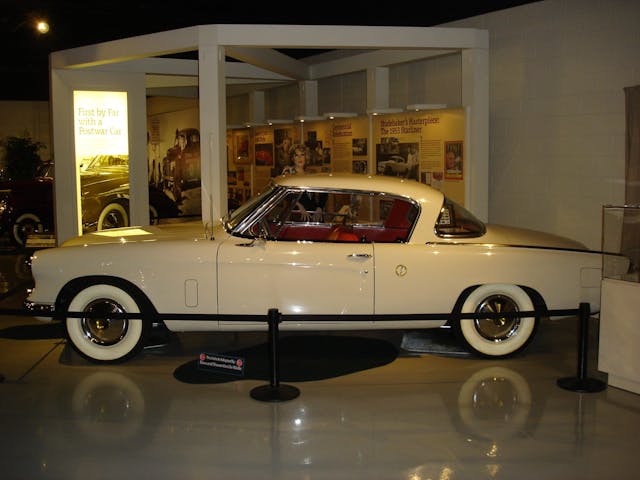
Trouble was, everyone and their brother wanted the sleek, sexy Loewy coupes. Studebaker had not anticipated the demand, because traditionally, its bread and butter were two- and four-door sedans, not coupes. So demand for sedans was well below expectations and much higher than anticipated for the coupes. It didn’t help that the pillarless coupes had some flexing issues that led to doors sometimes not wanting to open. Or close. A solution was found relatively quickly, but I imagine new ’53 coupe owners may have been soured on the experience with early-build versions.
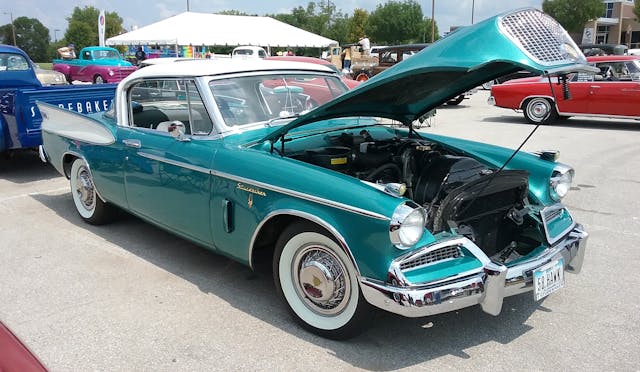
That’s not to say that Studebaker stopped making neat cars after the 1953 models didn’t live up to the company’s (and in some cases, customers’) expectations.

Studebaker’s classic Loewy coupes, handsome E Series (later Transtar) pickups, hot-rod Golden Hawk, innovative Wagonaire, and many other models were attractive and interesting, but sales continued their downward trajectory. Meanwhile over at GM, Ford, and Chrysler, new designs, new gadgets, and even more deluxe models were making the warmed-over ’53 bodies look also-ran by comparison.
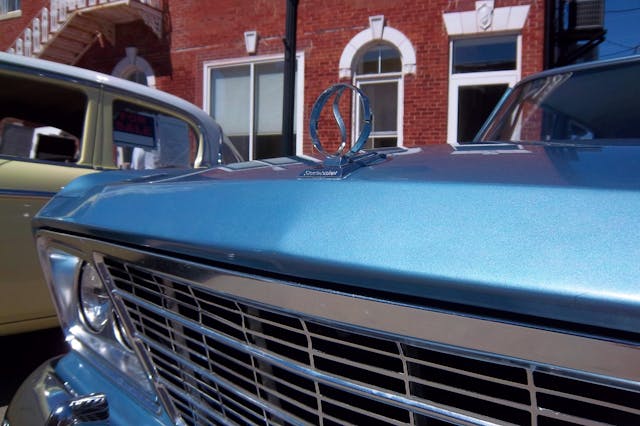
The Studebaker story is oft told. So I won’t go too deeply into it. It’s hard for me to do a post on a Studebaker and not start with the history of the company and all the stuff that happened. It wasn’t a happy ending, but it sure was interesting. I think a movie about the last decade or so of Studebaker would be pretty interesting. All the twists and turns! Sherwood Egbert, the Lark, the Avanti, Andy Granatelli, the move to Canada, etc.
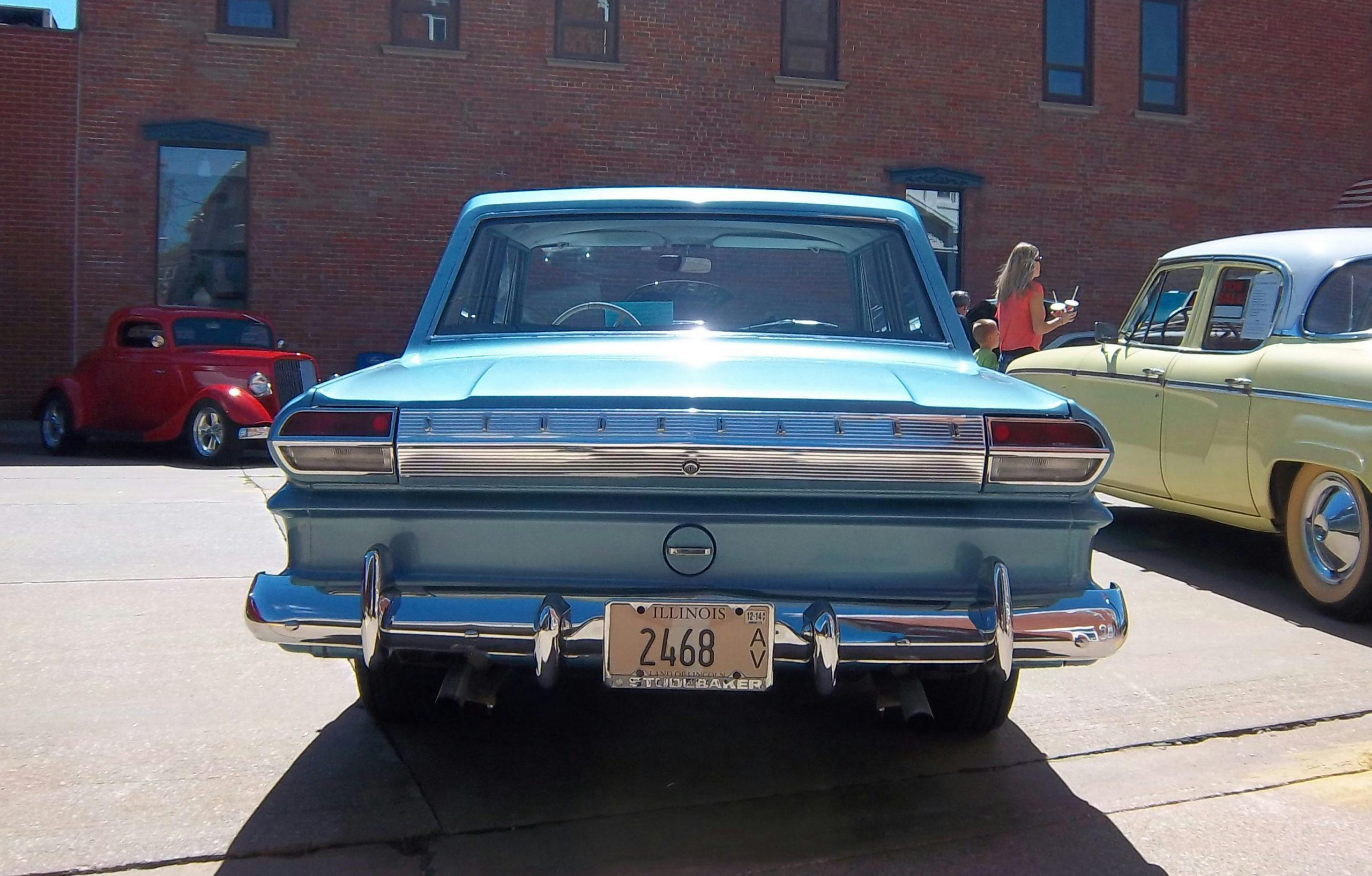
Now, where was I? Oh yes, one big problem was that Studebaker didn’t control its costs. Whatever the workers wanted, they got, and with nary a cross word from management.

That led to astronomical production costs compared with the Big Three, and Studebaker’s rapidly aging facilities complicated matters further. The success of the ’59 Lark provided a brief reprieve, but when the Falcon, Corvair, and Valiant debuted, it was back to the same-old, same-old in a very short period of time.
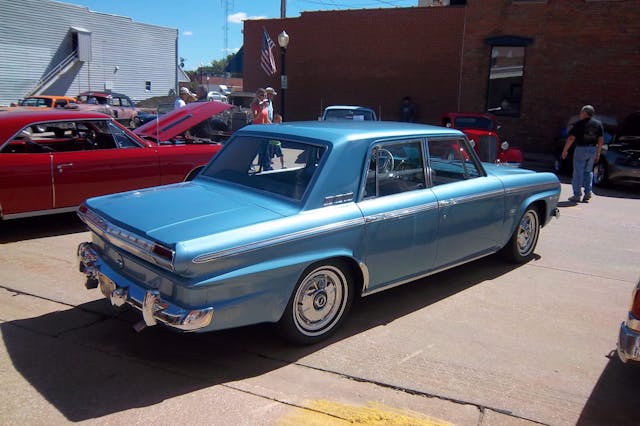
And thus do we come to the 1964 Studebakers. Brooks Stevens, the renowned Milwaukee-based industrial designer, was a godsend to small companies like Studebaker. He had quite a knack for taking a shoestring budget and delivering a major refresh that looked great. What would be his last assignment for Studebaker was the 1964 model refresh. There’s a 1959 Lark under there, but it isn’t immediately obvious.
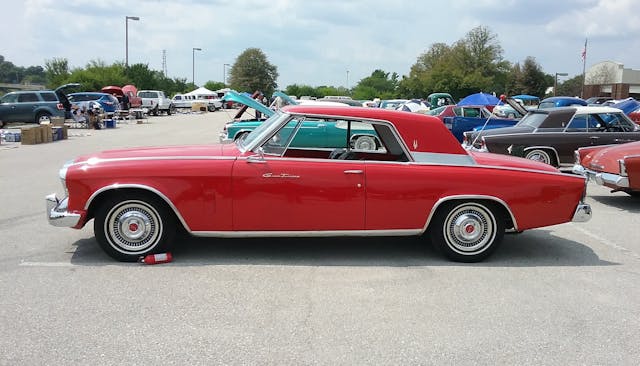
Stevens first worked his magic in 1962, with the Mercedes-like ’62 Larks. They looked to be all-new, thanks to clever styling, but were the same old Lark. Sales increased over 1961. That same year, with perhaps his best design ever, the Gran Turismo Hawk appeared, looking surprisingly modern with its shorn fins and Thunderbird-style roofline. The transformation from the finned 1956–61 Hawk was remarkable.
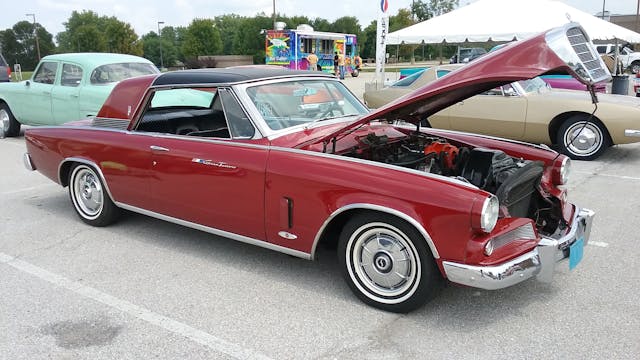
Studebaker had spent most of the early ’60s clinging to relevance. Had it not been for Sherwood Egbert, Studebaker may have had even less time left than it ultimately received. But Egbert, going against orders to shut down Studebaker, instead tried his best to keep it going, hiring Stevens to come up with new styling, introducing the Avanti, and setting records at the Bonneville Salt Flats with Andy Granatelli-prepped R1- and R2-powered Hawks and Avantis.

Egbert did all he could to keep Studebaker afloat, but unfortunately his effort didn’t translate into any meaningful sales increase. Illness forced his retirement from Studebaker in November 1963; almost immediately, the Studebaker board approved shutting down South Bend in favor of limited production at its Canadian facility. The last Indiana-built car came off the line December 20, 1963. At the same time, production of all light- and heavy-duty truck lines, the Avanti, and the GT Hawk ended for good.
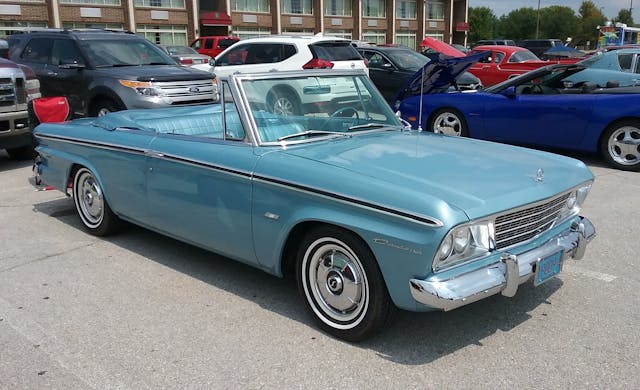
But not before the last “new” Studebakers came out in the fall of 1963. While technically still Larks, the name was not seen on the car. Instead, the names of different trim lines—Challenger, Commander, Daytona, and Cruiser—were emphasized. Studebaker may not have had much time left, but it still had quite a good-looking car, as well as attractive, colorful interiors.
The instrument panel was particularly sharp. In contrast to so many other domestic cars, the Stude had full instrumentation. And the optional tachometer was placed right there on the dash with the other gauges, unlike the difficult-to-read, center-console-mounted tachs in some GM and Ford products. Despite all of Studebaker’s troubles, it still offered many thoughtful, intelligent design features.
In addition to more modern, squared-off sheet metal, there was power if you wanted it. The aforementioned R1–R4 power options resulted in a sedate little Studebaker that could potentially suck the doors off unsuspecting Sport Furys, Impala SSs, and Fairlane 500s.
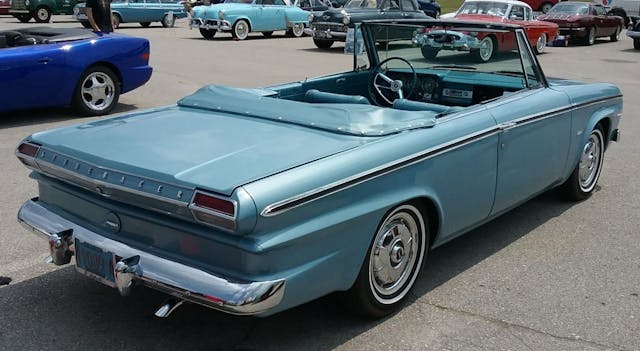
You could even get disc brakes, but you’d have to hurry, as only South Bend-built Studebakers got the R-spec equipment. The denuded Canadian-built 1964 lineup would be limited to bread-and-butter family cars, not hot rod Avantis, Larks, or GT Hawks. And no convertibles!
Yes, the beautiful Daytona convertible, with its fresh sheetmetal and most-excellent interior, would disappear with the closing of the South Bend factory in December ’63.
All Canadian Studes would have a fixed metal roof—unless you sprung for a Wagonaire with the retractable roof.
With the ’64 redesign, Studebaker deemphasized the Lark nameplate, and so all non-Hawk Studebakers were emblazoned with their trim levels: Daytona, Commander, Cruiser, etc. The Daytona convertible retailed for $2797 (about $26,722 today).
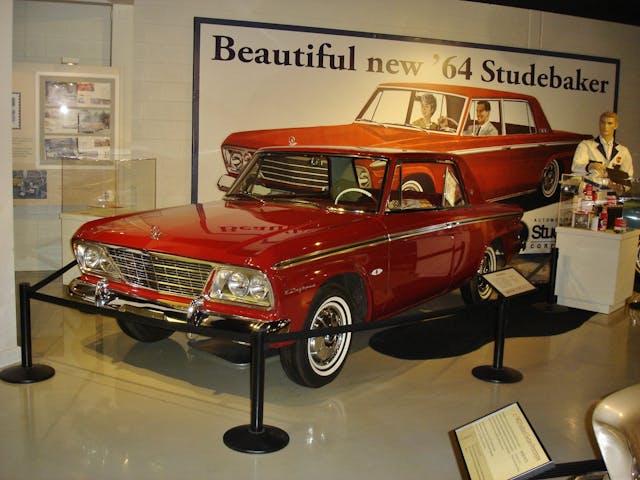
According to my Standard Catalog of American Cars 1946–75, only 647 Daytona convertibles were built between the introduction of the 1964 models and the closure of South Bend in December 1963. The final Indiana car built was a two-door Daytona V-8 hardtop. Like the convertible, there would be no pillarless two-doors once production moved to Hamilton, Ontario.
And it was sporting some serious firepower under the hood—yep, an R1.
And it had a red interior. The car survives in showroom condition at the Studebaker National Museum in South Bend. If you visit, tell Andrew Beckman that I sent you.
My friend Jim Cavanaugh and I got to see Beckman’s personal Studebaker back in 2015. We also got to view a bit of the museum archives, which was very cool. I highly recommend that if you’re a gearhead who happens to find yourself in central Indiana, you’ve got to visit the facility.
Oh, and Mr. Beckman’s Daytona sounded very healthy indeed when he pulled up out front to meet us.

But if you wanted luxury and not necessarily a hot rod, you needed look no further than the Cruiser. As in the past, the Cruiser nameplate designated the finest Studebaker you could get. While previous versions of the Cruiser had merited a longer wheelbase than lesser Studes, the 1964 model had the same 113-inch wheelbase and 194-inch overall length as the other ’64 four-door sedans. Price: $2595 ($24,792). Only 5023 were built.
The attractive, new-for-1964 “Lazy S” hood ornament was indeed appropriate for the luxurious Cruiser; it also graced all other Larks except the entry-level Challenger model. In fact, this picture is of the 1964 Daytona convertible, spotted in the summer of 2018 at an SDC zone meet in Iowa City, Iowa.
It’s just a happy coincidence that both cars are painted in Laguna Blue, an original Studebaker color. It’s very sharp, whether on the Cruiser sedan or the Daytona convertible. But who doesn’t love a convertible?
Cruiser features included a standard Thunderbolt 289-cu-in V-8 (although some export Cruisers were built with the six), plush cloth interior, wall-to-wall carpeting, and extra chrome trim inside and out. Available only as a four-door sedan, the $2595 Cruiser ran about $650 above the cheapest Lark, the $1935 six-cylinder Challenger two- door sedan.
As with our featured Cruiser sedan, most 1964s got a clock instead of a tachometer. I think this may be one of the most attractive instrument panels of the ’60s—all business, but with just enough chrome trim to let you know you’re in something a cut above.
Even our sporty, topless Daytona feature car, resplendent in Laguna Blue with matching blue bucket seat interior and floor-shift automatic transmission, had the clock instead of the tach. Well, Studebaker buyers were a somewhat more practical bunch.
It was a good try; but with South Bend shut down, already gun-shy Studebaker buyers became even more skittish. In 1965, operating out of a Canadian facility originally intended for Dominion-only sales, Studebakers were technically imports in 1965–66.
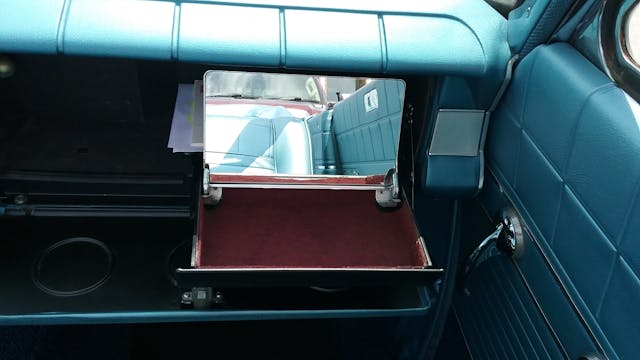
Ultimately, the diversification-driven Studebaker board got its way, and in 1966 the car division was shut down in favor of STP car care products, Gravely tractors, and Trans International Airlines. But handsome cars like these true-blue 1964 examples remind us of what was once the oldest auto manufacturer in America. Even to the end, their cars were interesting.
One final note: Most of the Studebakers in this column were seen at a Studebaker Drivers Club meet on August 11, 2018. The Cruiser was spied at the Planes, Trains, and Automobiles show in historic Geneseo, Illinois, in September 2012. Special thanks to my uncle, Dave Klockau, for texting me and letting me know about the terrific Studebaker club show! Being in the Quad Cities, I never would have known otherwise. It was a great show. There was also a gorgeous 1958 Packard Hawk that I still need to write about one of these days!
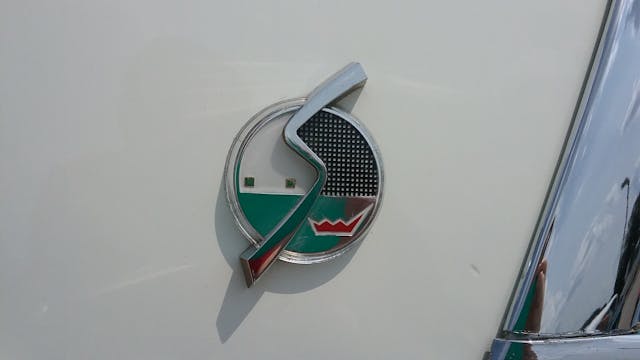
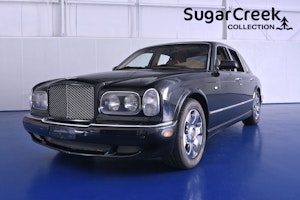





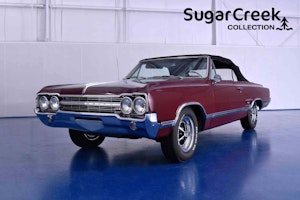
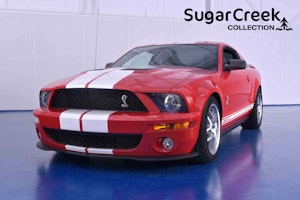




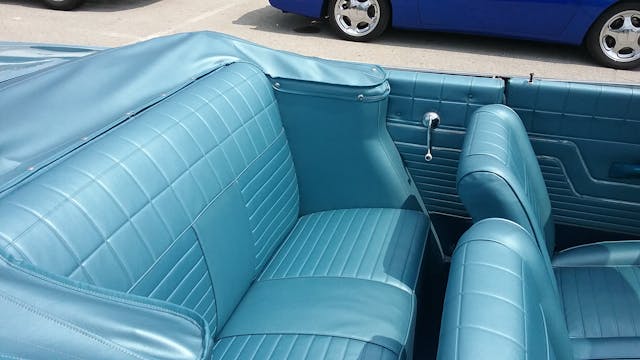


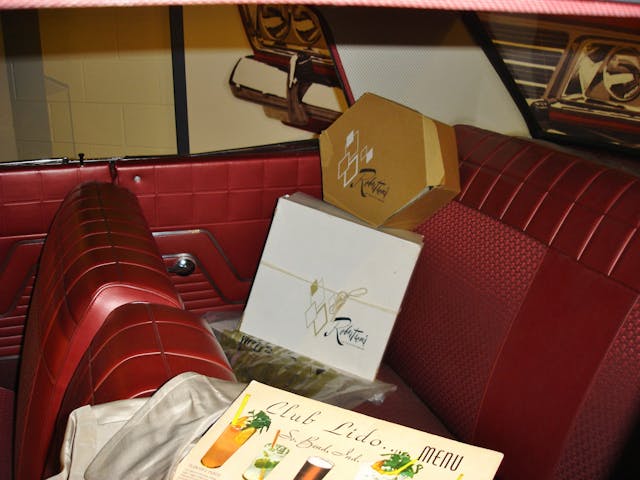
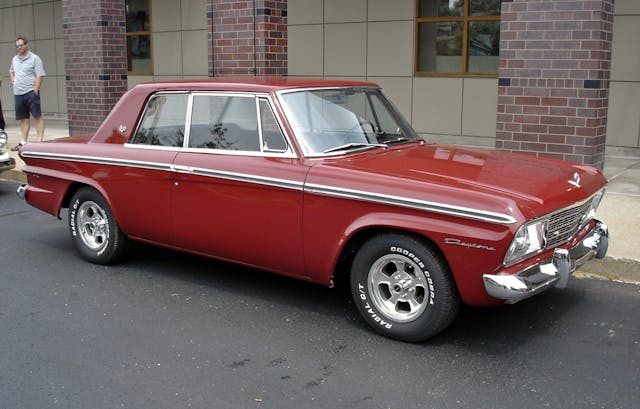



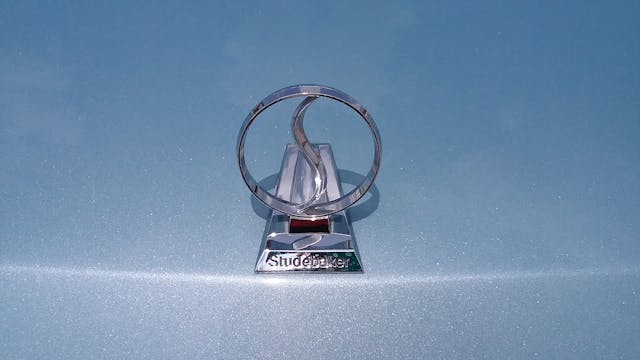
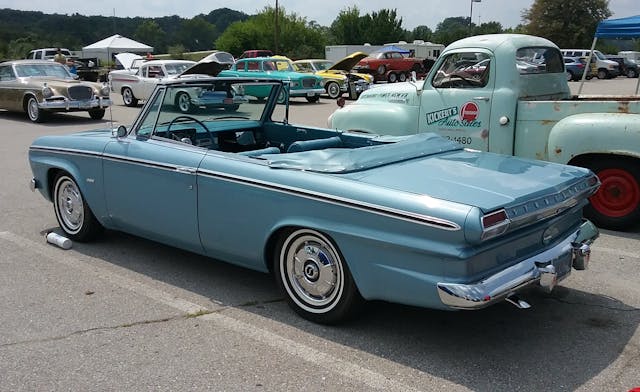
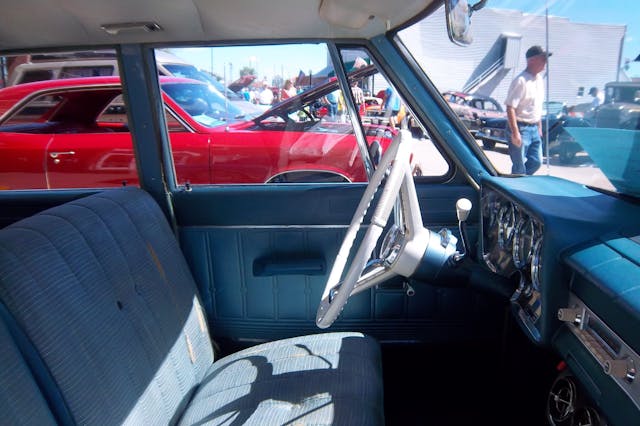
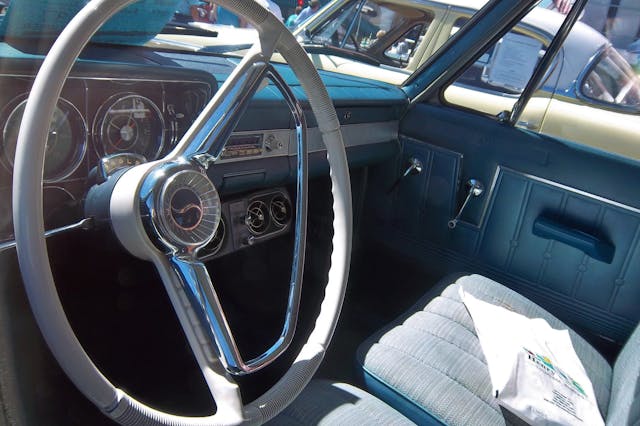
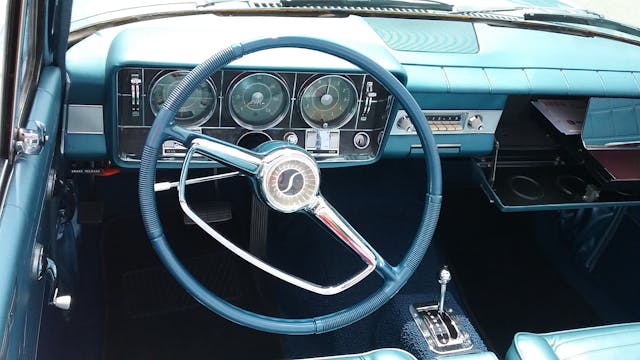











































The 64-66 Cruisers/Daytona look as good as a Chevy II. Pretty sure the 65 & 66 made in Canada even had Chev drivetrains in them.
Studebaker was ahead of its time (at times) and lots like to say they kept old bodies around too long. So funny in an era when the VW Beetle stayed the same for decades with a decades-out-of-date look. The Bourke designed 53 coupe seems like a heavy influence on the second gen Camaro (look at the side profiles).
All the independents suffered from economy of scale. It’s too bad they didn’t figure out the everybody-in merger the first time they tried it as going with just Packard later was a mistake for pretty much all involved it seems.
Tom, Studebaker offered disc brakes right up until the last car in March 1966.
I am the owner of the Daytona convertible . Thanks for featuring it. I wish I could have talked with you.
Great story on a much missed nameplate. There were some 64 Daytona convertibles assembled in Canada. I agree the 64 models were a nice refresh of the Lark. Not well known is that all of 1953-1966 models used largely the same underpinnings. The Larks were nothing more than shortened versions. The Avanti and the Daytona shared the same X frame. I have a 1964 Daytona convertible.